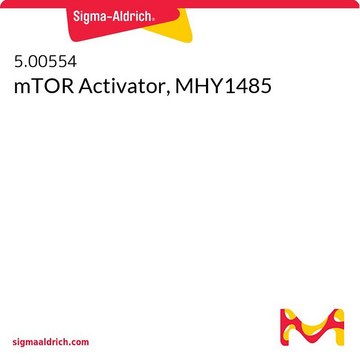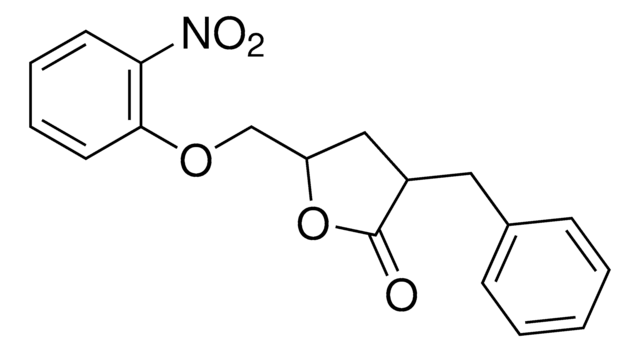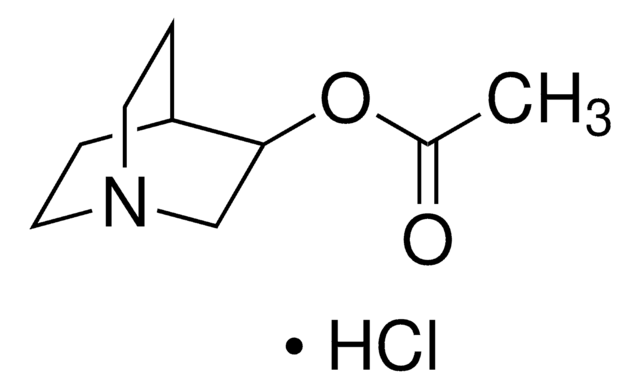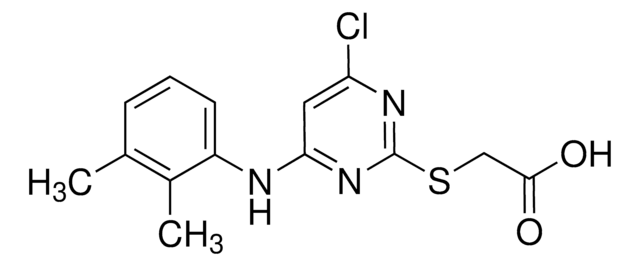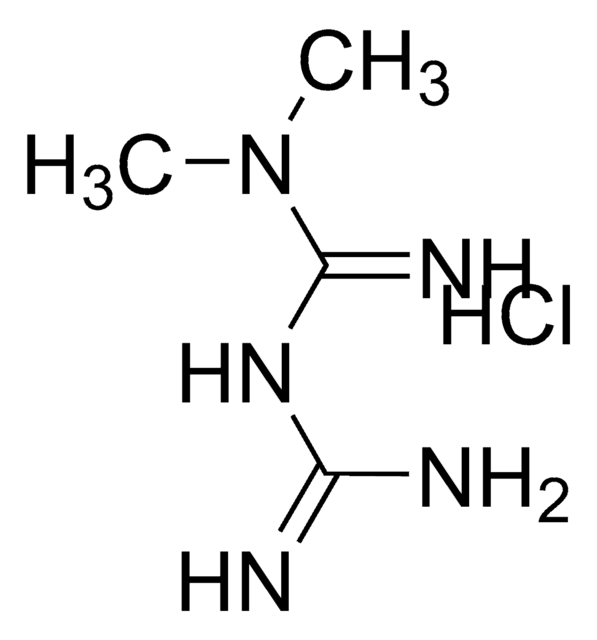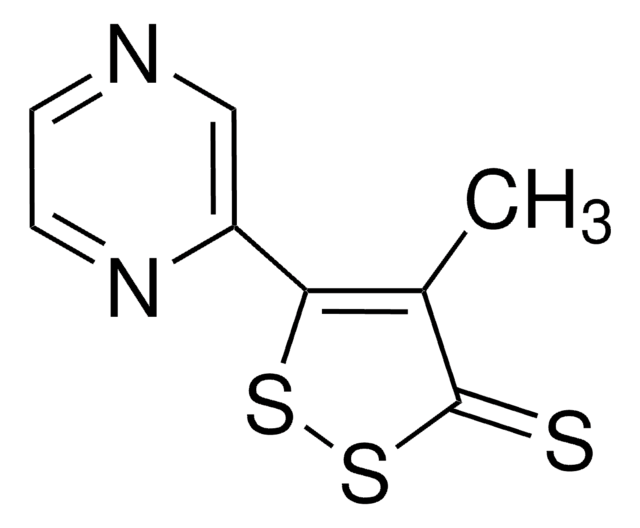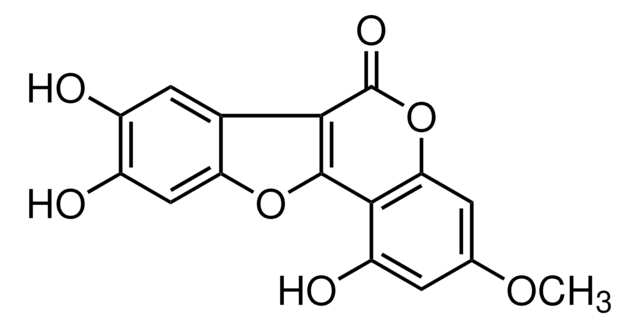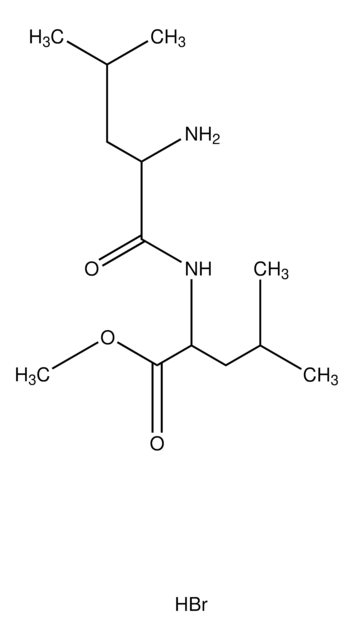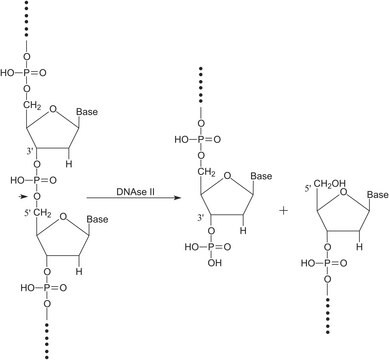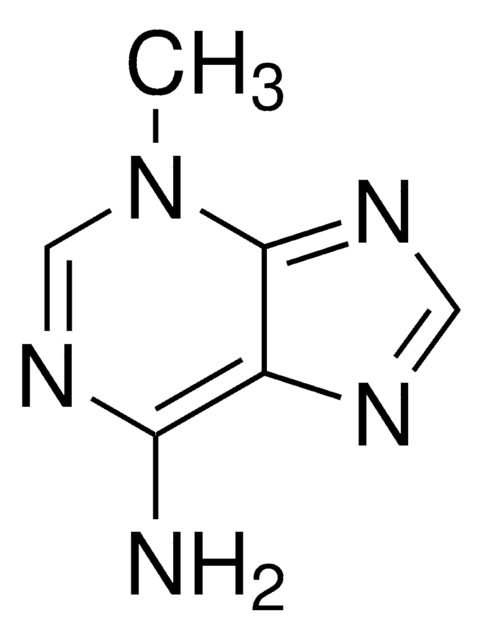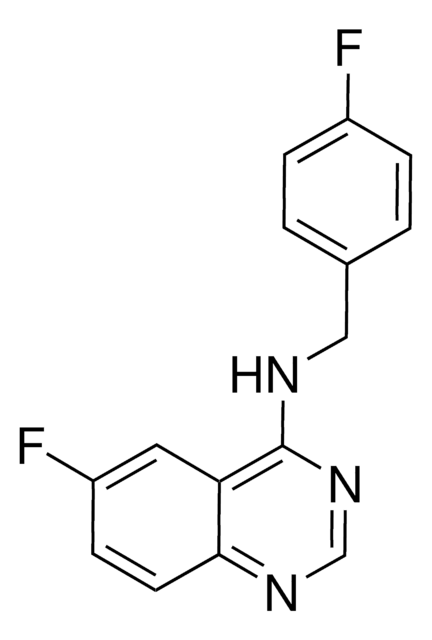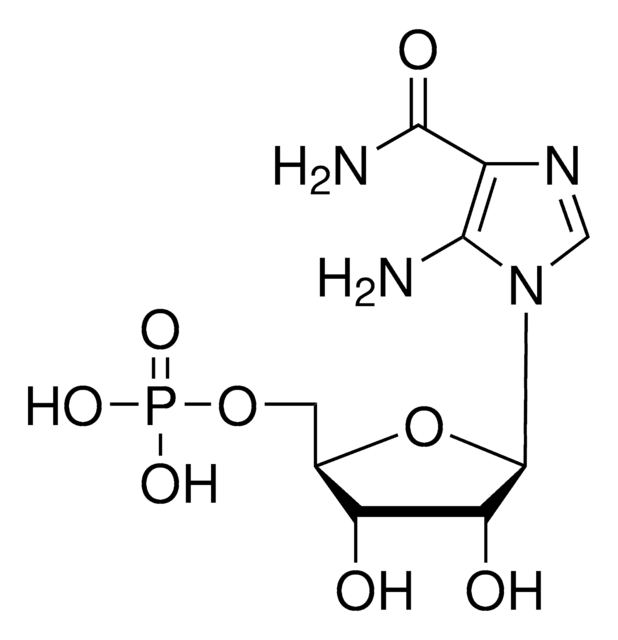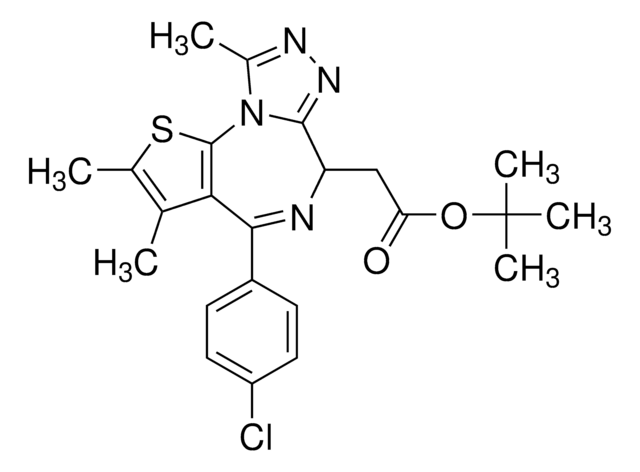SML0810
MHY1485
≥95% (HPLC)
Sinônimo(s):
4,6-Di-4-morpholinyl-N-(4-nitrophenyl)-1,3,5-triazin-2-amine
About This Item
Produtos recomendados
Ensaio
≥95% (HPLC)
Formulário
powder
cor
white to beige
solubilidade
DMSO: 2 mg/mL, clear (warmed)
temperatura de armazenamento
2-8°C
cadeia de caracteres SMILES
[N+](=O)([O-])c1ccc(cc1)Nc2nc(nc(n2)N4CCOCC4)N3CCOCC3
InChI
1S/C17H21N7O4/c25-24(26)14-3-1-13(2-4-14)18-15-19-16(22-5-9-27-10-6-22)21-17(20-15)23-7-11-28-12-8-23/h1-4H,5-12H2,(H,18,19,20,21)
chave InChI
MSSXBKQZZINCRI-UHFFFAOYSA-N
Aplicação
- to study the effect of mammalian target of rapamycin mTOR signalling on in vitro O-GlcNAcylation
- to inhibit autophagy
- as a mTOR agonist to demonstrate that the O-linked N-acetylglucosamine transferase- RNA helicase p68 (OGT-DDX5) axis regulates colorectal cancer cell proliferation and metastasis
Ações bioquímicas/fisiológicas
Características e benefícios
Código de classe de armazenamento
11 - Combustible Solids
Classe de risco de água (WGK)
WGK 3
Ponto de fulgor (°F)
Not applicable
Ponto de fulgor (°C)
Not applicable
Escolha uma das versões mais recentes:
Certificados de análise (COA)
Não está vendo a versão correta?
Se precisar de uma versão específica, você pode procurar um certificado específico pelo número do lote ou da remessa.
Já possui este produto?
Encontre a documentação dos produtos que você adquiriu recentemente na biblioteca de documentos.
Os clientes também visualizaram
Protocolos
Sigma-Aldrich offers many products related to PKB/Akt for your research needs.
Conteúdo relacionado
Apoptosis, or programmed cell death (PCD), is a selective process for the removal of unnecessary, infected or transformed cells in various biological systems. As it plays a role in the homeostasis of multicellular organisms, apoptosis is tightly regulated through two principal pathways by a number of regulatory and effector molecules.
Nossa equipe de cientistas tem experiência em todas as áreas de pesquisa, incluindo Life Sciences, ciência de materiais, síntese química, cromatografia, química analítica e muitas outras.
Entre em contato com a assistência técnica